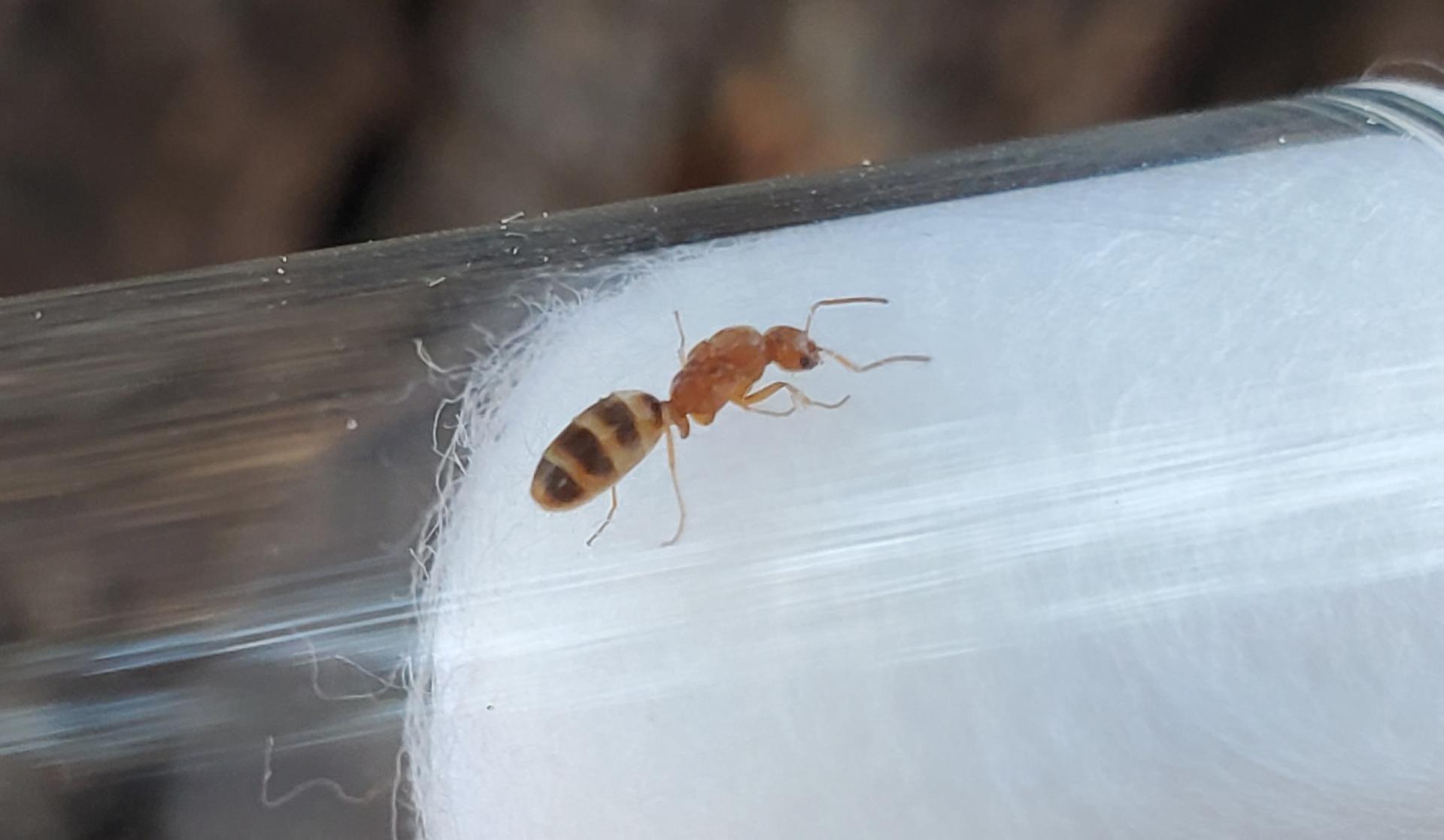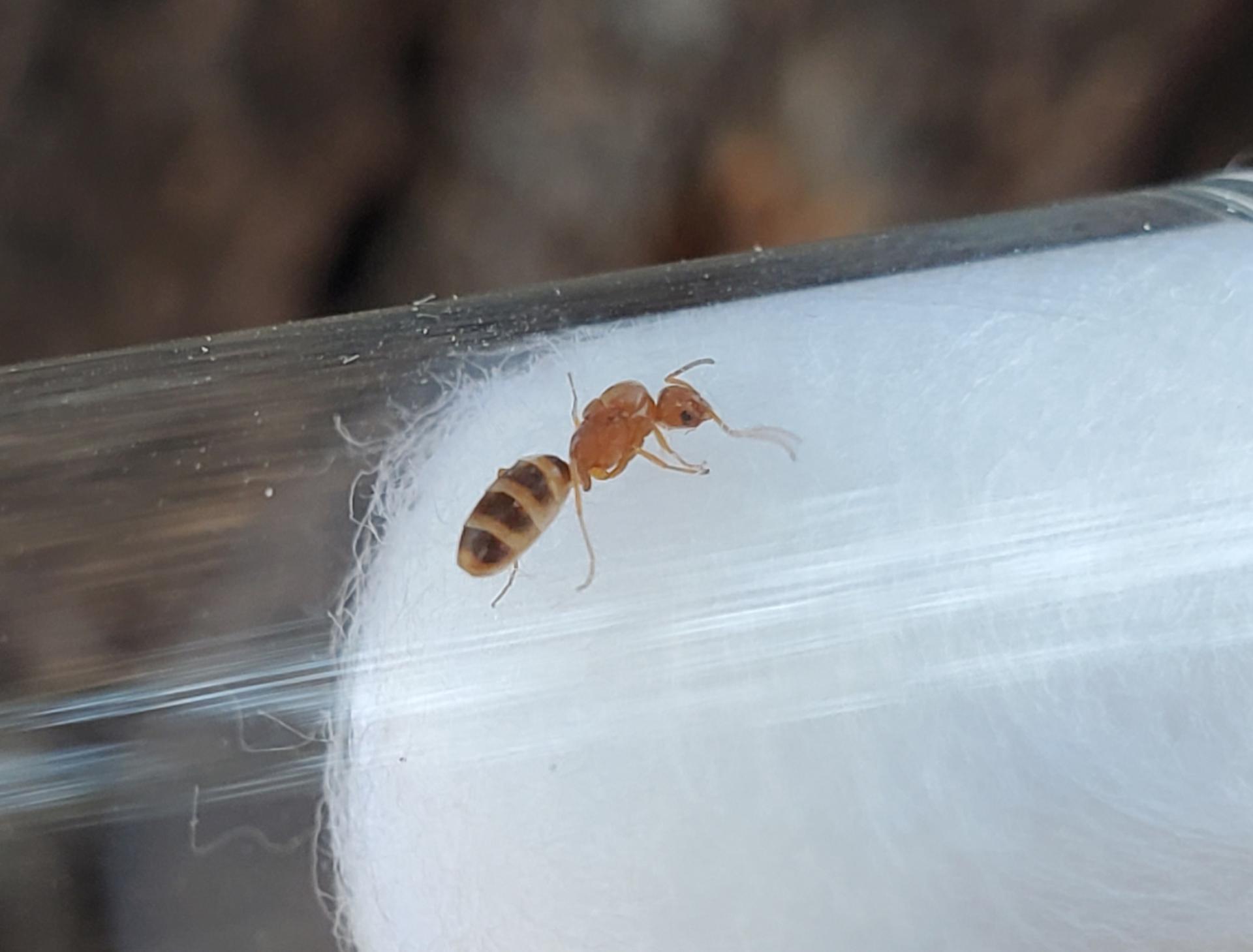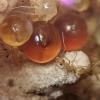- Formiculture.com
- Forums
- Gallery
- Members
- Member Map
- Chat

Palm Springs, CA - 07/27/2021
Started By
Daniel
, Jul 27 2021 12:05 PM
8 replies to this topic
#1
 Offline
-
Posted July 27 2021 - 12:05 PM
Offline
-
Posted July 27 2021 - 12:05 PM
Location of collection: Near (west of) Palm Springs, CA
Date of collection: 07/27/2021
Habitat of collection: desert riparian/alluvial sage scrub
Length: 6.0-6.5 mm
Coloration, hue, pattern and texture: light red/orange head and thorax; yellow/light honey colored gaster with black dorsal bands; smooth, almost velvety
Distinguishing characteristics: strong contrasting black/yellow banding on top half of gaster solid yellow underside
Nuptial flight time and date: approximately 0800 on 07/27/2021
#3
 Offline
-
Posted July 27 2021 - 12:48 PM
Offline
-
Posted July 27 2021 - 12:48 PM
Id agree with him it is Forelius mccooki from comparing pictures of queens of F. Priunosus and Mccooki.
What i am keeping Brachymyrmex patagonicus 1 worker x5 tetramorium immigrans 10 workers x2 lasius crypticus 5 workers Pheidole californica 6 queens150~ workers 10-30 majors, Formica argentea 10~ W
What I've kept crematogaster sp pheidole californica camponotus vicinus high elev, dumetorum,laevigatus, prenolepis imparis, pogonomyrmex californicus and subnitidus and californicus, veromessor andrei, camponotus sayi, hypoponera opacior ,Liometopum occidentale solnopsis molesta group, solenopsis xyloni.
#4
 Offline
-
Posted July 27 2021 - 12:49 PM
Offline
-
Posted July 27 2021 - 12:49 PM
I agree with forelius mccooki.
Edited by Manitobant, July 27 2021 - 12:50 PM.
My journals:
Polyergus Mexicanus: https://www.formicul...gs/#entry175528
Lasius minutus: https://www.formicul...cs/#entry174811
Lasius latipes: https://www.formicul...gs/#entry206449
General acanthomyops journal: https://www.formicul...yops-with-eggs/
Polyergus Mexicanus: https://www.formicul...gs/#entry175528
Lasius minutus: https://www.formicul...cs/#entry174811
Lasius latipes: https://www.formicul...gs/#entry206449
General acanthomyops journal: https://www.formicul...yops-with-eggs/
#5
 Offline
-
Posted July 27 2021 - 1:27 PM
Offline
-
Posted July 27 2021 - 1:27 PM
Thank you all.
#6
 Offline
-
Posted July 27 2021 - 3:01 PM
Offline
-
Posted July 27 2021 - 3:01 PM
You cannot distinguish the two without microscopic or extremely closeup macros of the face. Forelius is as far as you can go with the images shown here.
- Somethinghmm and TestSubjectOne like this
Hi there! I went on a 6 month or so hiatus, in part due, and in part cause of the death of my colonies.
However, I went back to the Sierras, and restarted my collection, which is now as follows:
Aphaenogaster uinta, Camponotus vicinus, Camponotus modoc, Formica cf. aserva, Formica cf. micropthalma, Formica cf. manni, Formica subpolita, Formica cf. subaenescens, Lasius americanus, Manica invidia, Pogonomyrmex salinus, Pogonomyrmex sp. 1, Solenopsis validiuscula, & Solenopsis sp. 3 (new Sierra variant).
#7
 Offline
-
Posted July 27 2021 - 3:55 PM
Offline
-
Posted July 27 2021 - 3:55 PM
You cannot distinguish the two without microscopic or extremely closeup macros of the face. Forelius is as far as you can go with the images shown here.
I know I'm going off a guess off of its visible apperance.
What i am keeping Brachymyrmex patagonicus 1 worker x5 tetramorium immigrans 10 workers x2 lasius crypticus 5 workers Pheidole californica 6 queens150~ workers 10-30 majors, Formica argentea 10~ W
What I've kept crematogaster sp pheidole californica camponotus vicinus high elev, dumetorum,laevigatus, prenolepis imparis, pogonomyrmex californicus and subnitidus and californicus, veromessor andrei, camponotus sayi, hypoponera opacior ,Liometopum occidentale solnopsis molesta group, solenopsis xyloni.
#8
 Offline
-
Posted July 27 2021 - 6:02 PM
Offline
-
Posted July 27 2021 - 6:02 PM
But their appearance is indistinguishable without really close up pictures or a microscope…I know I'm going off a guess off of its visible apperance.
You cannot distinguish the two without microscopic or extremely closeup macros of the face. Forelius is as far as you can go with the images shown here.
- TestSubjectOne likes this
#9
 Offline
-
Posted July 27 2021 - 6:41 PM
Offline
-
Posted July 27 2021 - 6:41 PM
You cannot distinguish the two without microscopic or extremely closeup macros of the face. Forelius is as far as you can go with the images shown here.
I know I'm going off a guess off of its visible apperance.
You shouldn't give an ID on a guess. Based on your history of giving incorrect identification I would suggest that you either stop posting IDs or use resources such as antmaps.org and antwiki.org, as well as looking at anatomical features, to give accurate identification. It is ok to give only a genus identification or none at all if you don't have enough knowledge or low quality picture.
- Somethinghmm likes this
TestSubjectOne's Experiences in Antkeeping General Journal
Currently Keeping:
- Veromessor pergandei (1 queen, 600 workers)
- Novomessor cockerelli (1 queen, 200 workers)
- Myrmecocystus mexicanus (1 queen, 100 workers)
- Brachymyrmex patagonicus (3 queens?, 2,000 workers? & alates)
- Crematogaster sp. (1 queen, 600 workers)
- Liometopum occidentale (1 queen, 800 workers)
- Camponotus absqualator (1 queen, 130 workers)
1 user(s) are reading this topic
0 members, 1 guests, 0 anonymous users





















